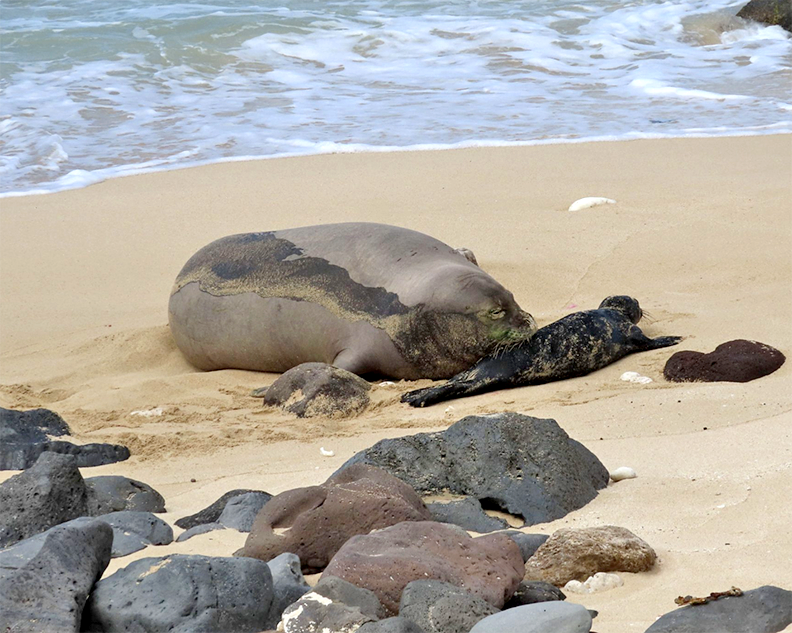By Ruby Pap
Kaua‘i’s coral disease has weighed heavy on my mind over the past couple of years. Therefore, I was happy to hear the state government has formed a Management Response Team (dlnr.hawaii.gov/reefresponse) and researchers from University of Hawai‘i are expanding on studies to understand the disease and its causes.
I took it as an opportunity to learn about the scientific methods that are behind such a study.
The disease is referred to as black band disease. It was first documented at low levels in Hanalei in 2004 by Dr. Greta Aeby, of the Hawai‘i Institute of Marine Biology, as Montipora banded tissue loss. Montipora is the genus of rice corals that is exhibiting the disease. In 2012, an “Eyes of the Reef” volunteer, Terry Lilley, reported the disease’s rapid progression on the North Shore. Scientists took samples and analyzed them in the lab through a process called histopathology.
Drs. Thierry Work (USGS) and Sean Callahan (UH Microbiology) found a filamentous cyanobacteria called Pseudoscillatoria associated with the lesions, which is known to cause black band disease. It is identifiable by a semi-circular pattern of tissue loss, which is frequently surrounded by a dark band.
How widespread is BBD on Kaua‘i? Since the initial survey in 2012, Dr. Aeby and her PhD Student, Christina Runyon have been conducting surveys. These occurred in May 2013 (six North Shore sites), July 2013 (25 North Shore sites) and December 2013 (13 South Shore sites surveyed). They took measurements of coral cover, disease, fish abundance, temperature, sediment and water clarity.
Results thus far show that disease is predominantly affecting the North Shore, with highest levels of infection at Ke‘e and Makua. Eighty six percent of surveyed reef sites on the North Shore showed signs of infection. Seasonality may be a factor in the disease, with more active lesions being observed in the summer.
Why this is happening is perhaps the hardest question to answer, because just like undergoing a health diagnosis with your doctor, diagnosing a diseased reef is a methodological process, where multiple variables are tested both in the field and the lab.
As part of her doctoral research, Runyon will use statistical modeling to examine the relationship between disease prevalence and biotic (host abundance, fish density, algal cover, etc.) and abiotic variables (sedimentation, water clarity, distance to stream mouths, land-use practices, etc.). Revealing disease-environment relationships will narrow down which stressors should be studied further.
What can be done in the meantime? Dr. Aeby has conducted a 14-month trial of lesion occlusion as a potential treatment for the disease. The disease lesion and the area around it were covered with marine epoxy, and the results were encouraging that it could work as a potential treatment for the disease.
In addition, there is a host of responsible practices and behaviors that we should be aware of to help promote healthy watersheds and healthy reefs. Check out hanaleiwatershedhui.org for more information.
- Ruby Pap is a Coastal Land Use Extension Agent at University of Hawai‘i Sea Grant College Program. She can be reached at rpap@hawaii.edu
Caption:
Montipora coral with black band disease.
Photo by Dr. Greta Aeby
Discover more from ForKauaiOnline
Subscribe to get the latest posts sent to your email.






Leave a Reply